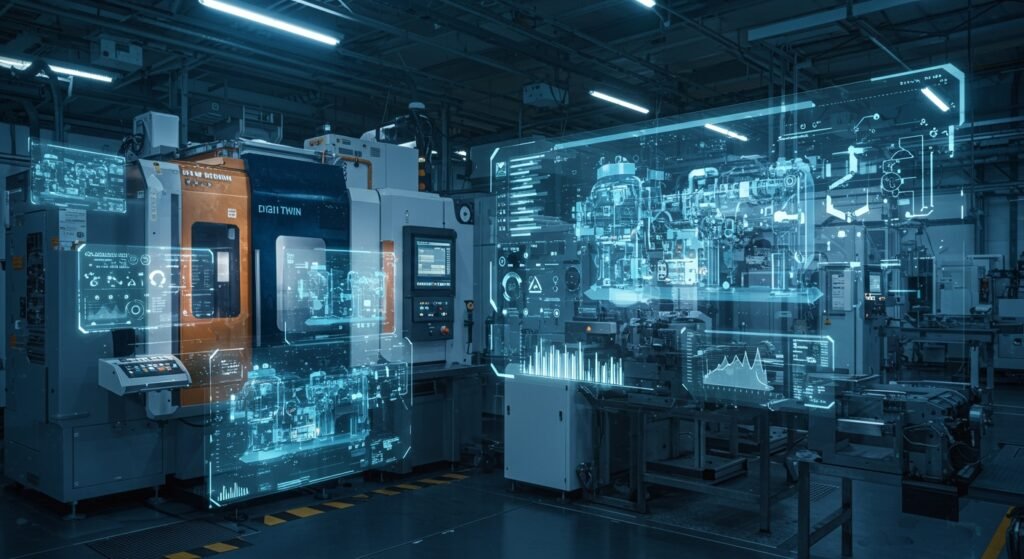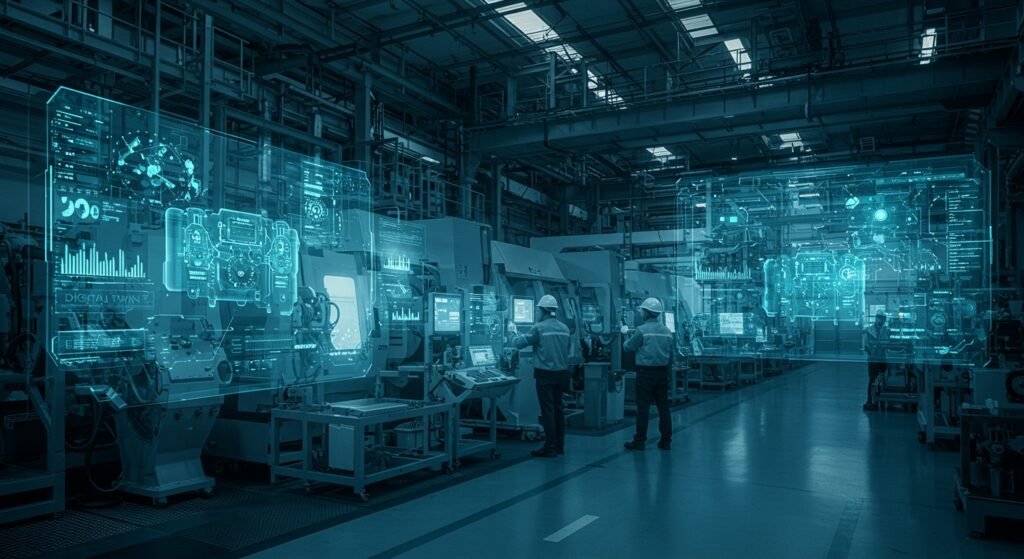7 Incredible Benefits of Digital Twins in Industrial Systems
Digital Twins in Industrial Systems are revolutionizing how industries operate, offering unparalleled insights and control over complex processes. This innovative technology creates a virtual replica of physical assets, processes, or systems, allowing for real-time monitoring, analysis, and simulation. From manufacturing plants to energy grids, the adoption of digital twins is enhancing efficiency, reducing downtime, and fostering a new era of predictive capabilities. Understanding their profound impact is crucial for any forward-thinking industrial enterprise.
Table of Contents
- Understanding Digital Twins in Industrial Systems
- How Digital Twins Work
- Key Benefits for Industrial Operations
- Implementing Digital Twins: Challenges and Solutions
- Real-World Applications and Success Stories
- The Future of Industrial Engineering
Understanding Digital Twins in Industrial Systems
A digital twin is essentially a virtual model designed to accurately reflect a physical object. The ‘twin’ aspect signifies that the digital model is connected to its physical counterpart via sensors, receiving real-time data about its condition, performance, and environment. In industrial systems, this can range from a single component like a pump to an entire factory floor or a supply chain. This constant data flow ensures the digital model remains an exact, dynamic representation of the physical asset throughout its lifecycle.
How Digital Twins Work
The core mechanism involves three key elements: the physical product, the digital twin itself, and the data linking them. Sensors attached to the physical asset collect data on various parameters such as temperature, pressure, vibration, and performance metrics. This data is then transmitted to the digital model, which processes it to update its status, run simulations, and predict future behavior. This continuous feedback loop allows engineers and operators to monitor, analyze, and even control the physical asset remotely, making informed decisions without physical presence.
Key Benefits for Industrial Operations
The advantages of integrating digital twins into industrial operations are numerous and impactful, driving significant improvements across various sectors.
Enhanced Predictive Maintenance
One of the most celebrated benefits is the ability to move beyond reactive or preventative maintenance to truly predictive maintenance. By continuously analyzing real-time data and historical trends, digital twins can accurately forecast when a piece of equipment is likely to fail. This allows maintenance teams to intervene precisely when needed, minimizing unscheduled downtime, extending asset lifespan, and significantly reducing maintenance costs. Industries like aerospace and automotive have seen substantial operational savings.
Optimized Performance and Efficiency
Digital twins enable comprehensive performance analysis and optimization. Engineers can run simulations on the virtual model to test different scenarios, optimize operational parameters, and identify potential bottlenecks or inefficiencies without impacting the physical system. This leads to better resource utilization, energy efficiency, and overall higher productivity. For instance, a manufacturing plant can simulate different production schedules to find the most efficient sequence, dramatically improving throughput.
Implementing Digital Twins: Challenges and Solutions
While the benefits are clear, implementing digital twins is not without its challenges, primarily concerning data management and integration.
Data Integration Hurdles
Connecting disparate data sources from various sensors, legacy systems, and IT/OT environments can be complex. Solutions involve robust data integration platforms, standardized data models, and the adoption of open communication protocols. Cloud-based solutions and edge computing also play a critical role in managing and processing the vast amounts of data generated.
The Role of IoT and AI
The Internet of Things (IoT) provides the necessary sensor network for data collection, while Artificial Intelligence (AI) and Machine Learning (ML) algorithms are crucial for processing this data, identifying patterns, and enabling predictive capabilities within the digital twin. Without a strong foundation in Industrial IoT and advanced analytics, the full potential of digital twins cannot be realized.
Real-World Applications and Success Stories
Digital twins are being deployed across a myriad of industrial sectors, demonstrating tangible value.
| Industry Sector | Digital Twin Application | Benefit |
|---|---|---|
| Manufacturing | Production Line Optimization | Reduced defects, increased throughput |
| Energy | Turbine Performance Monitoring | Predictive maintenance, enhanced efficiency |
| Aerospace | Aircraft Engine Health Monitoring | Improved safety, extended asset life |
| Construction | Building Lifecycle Management | Energy efficiency, operational cost reduction |
From GE’s use of digital twins for jet engines to Siemens’ applications in smart factories, the success stories are accumulating, proving the technology’s readiness for widespread adoption.
The Future of Industrial Engineering
The trajectory for Digital Twins in Industrial Systems is upward, promising even more sophisticated applications. As technology advances, we can expect digital twins to become even more intelligent, autonomous, and interconnected, forming complex ‘systems of systems’ that can self-optimize and adapt to changing conditions. This evolution will be a cornerstone of Industry 5.0, where human-machine collaboration is seamlessly enhanced by intelligent digital representations. To delve deeper into the impact of these technologies on the broader industrial landscape, consider exploring the latest reports on Industry 4.0 trends and innovations.
Embracing digital twins is no longer an option but a strategic imperative for industries aiming to maintain a competitive edge in a rapidly evolving global market. The ability to create, simulate, and optimize the physical world in a virtual environment unlocks unprecedented opportunities for innovation, efficiency, and sustainability.


